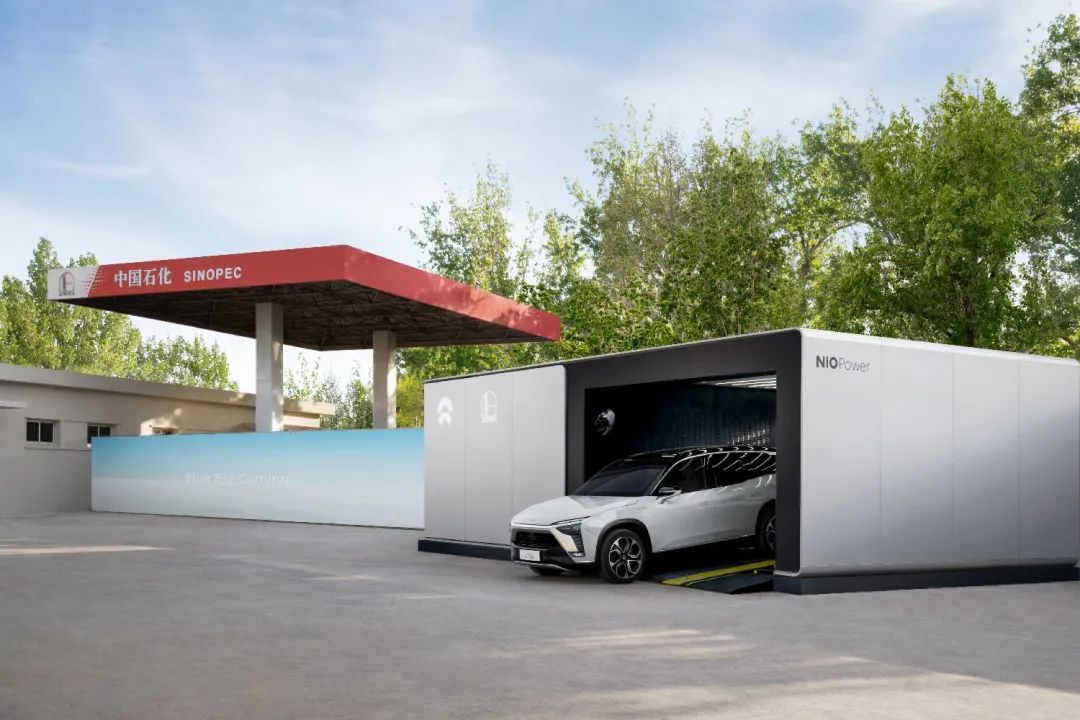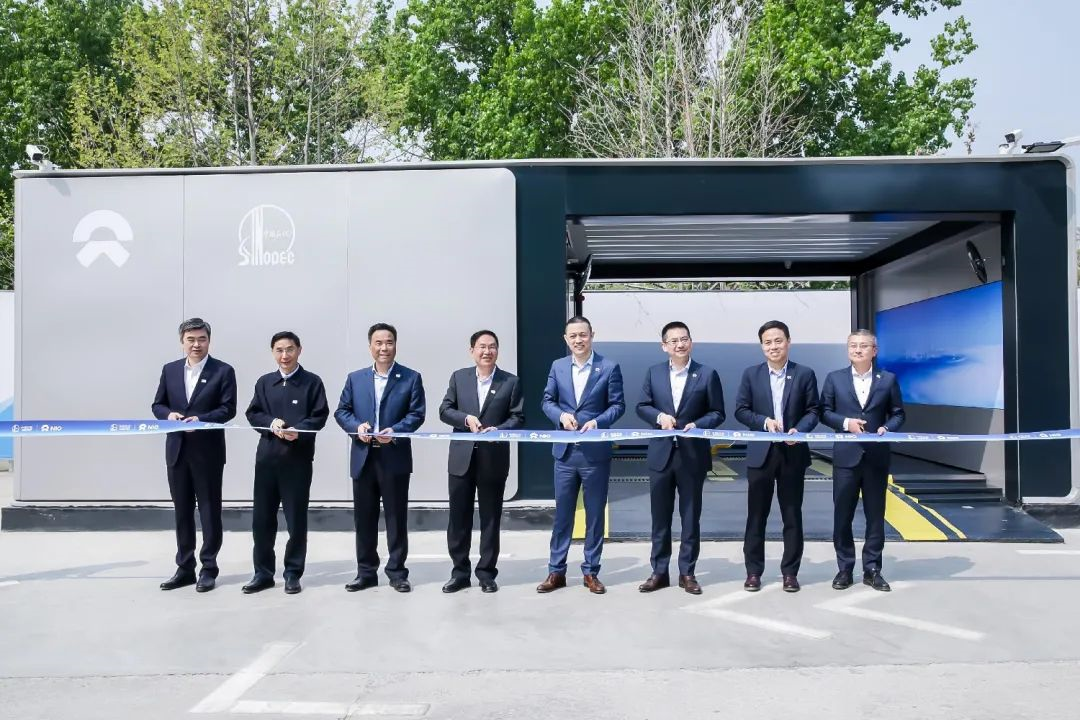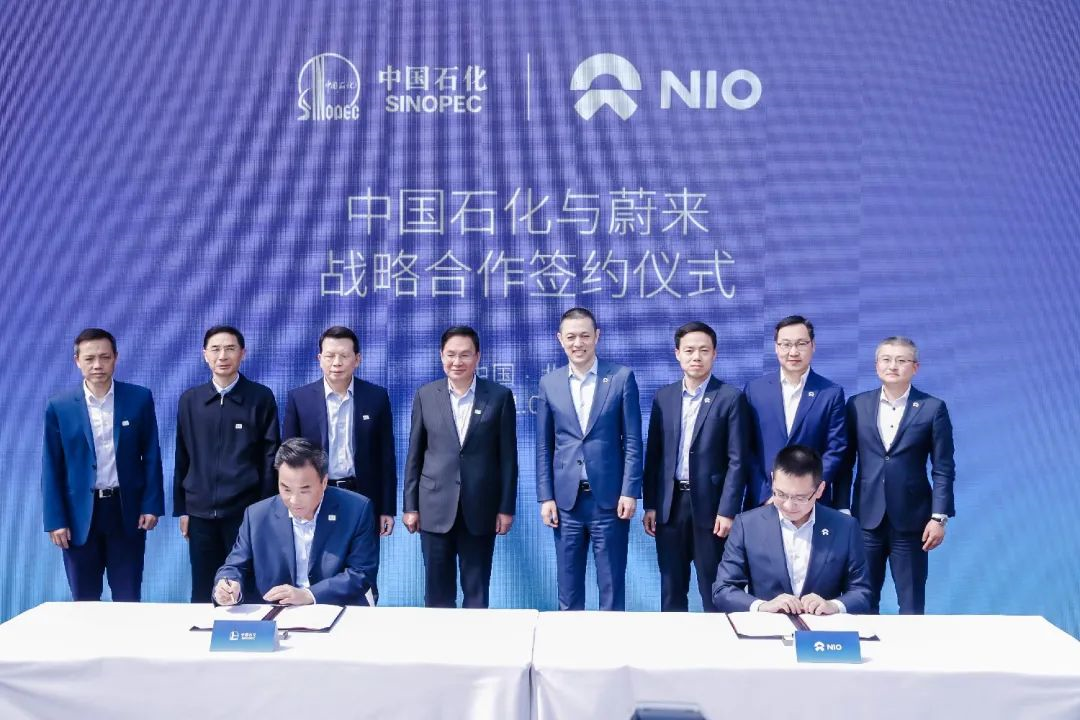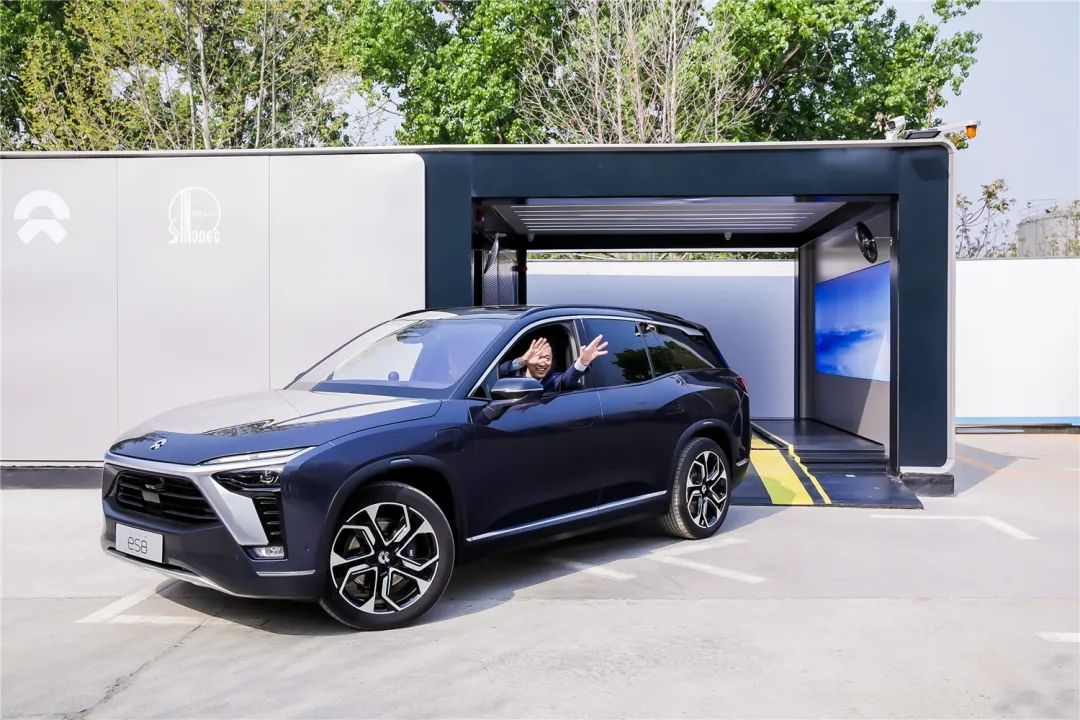Author: Yu Peng

Beijing, April 15, 2021, in the afternoon.
Despite a level 8 gale, lightning and thunder, and a “mud rain” pouring down in the city, China Petroleum and Chemical Corporation (Sinopec) and NIO successfully raced against the bad weather, inaugurating the first NIO Power Swap Station 2.0, which simultaneously serves as an office of Sinopec Chaoyang Branch in Beijing, under the clear and sunny sky of the Beijing spring.

Not only is it the first NIO Power Swap Station (NPSS) that operates together with gas stations, but it is also the first that has implemented SAP’s self-adaptive flexible electric vehicle (EV) changing platform and the dual-track synchronized exchange system to ensure maximum safety for its operations. Coincidentally, Sinopec and NIO signed a strategic cooperation agreement that day, aiming at exploring comprehensive cooperation in fields including business layout for charging and swapping, new materials, battery rental services, vehicle procurement, and leisure consumption scenarios.

Li Bin, the founder, chairman, and CEO of NIO, hopes that charging will be more convenient than refuelling. In the process of the NIO ES8 slowly reversing into the NPSS, Li Bin jokingly showed his hands to the media as if he had nothing to hide.

The NPSS can provide services to 312 EVs daily, with 13 storage units at each station. EV owners can activate the one-click parking function on their vehicles when they approach the NPSS in the future, and the rest will be automatically taken care of by the system.The second-generation charging and swapping stations from NIO are equipped with 202 monitoring sensors and 37 AI cameras throughout the entire site, which work in tandem with the four cloud systems: the TSP/GIS navigation cloud, SHIELD battery monitoring system, OSS equipment connectivity system, and POWERGO swapping operation platform.
To address potential issues such as foreign object intrusion, the charging and swapping stations are also equipped with 3D virtual biological barrier technology.
To be frank, the actual process of replacing the entire battery pack is not fast compared to refueling a car, which we are familiar with. We did not time it specifically, but we estimate that the entire process takes about four minutes.
As the cooperation between the cars, stations, and cloud systems gradually improves, the overall service efficiency will be enhanced. The second-generation charging and swapping stations support full-site FOTA upgrades, which leaves room for future expansion.
“Under full load, each second-generation charging and swapping station can provide up to 312 services per day.” At this point, Shen Fei expressed a hint of pride.
Regarding the safety issue of how the second-generation charging and swapping stations can coexist with gas stations, Li Bin seems particularly confident.
“In fact, Sinopec has very strict standards for fuel storage in gas stations. The deployment and operation of charging and swapping stations in gas stations in cooperation with Sinopec is no less safe than gas stations operating alone.”
This sentence from Li Bin reminds us of the intriguing famous line from the movie “The Grandmaster”: “No news is good news.”
It is learned that it only took a little over a month from the initial contact between NIO and Sinopec to the world’s first mass-produced automatic parking charging and swapping station being completed at the Sinopec Chaoying gas station. While the Chaoying station has begun operations, there are already hundreds of sites in various stages of progress. More partners across the country are advancing simultaneously.
Li Bin seems quite satisfied with this. During the afternoon’s media event, Li Bin inadvertently revealed NIO’s slogan for its charging and swapping layout: making charging more convenient than refueling.
Certainly, while we enjoy the significant convenience brought about by technological and commercial progress, we must not forget the environmental burden that accompanies it, and the food delivery industry is a good example.
When asked how to deal with retiring NIO battery packs, Li Bin stated that, based on the product life cycle, the NIO battery packs currently in use are still in their “prime.” When NIO cars or batteries near the end of their lives, NIO will use mature industrial processes to scrap them, thus minimizing environmental pollution and resource waste. NIO’s internal research on related business is being led by Dr. Shen Fei, Vice President of Power Management.## What can Cooperation with NIO Bring to Sinopec?
As the sales of traditional internal combustion engine vehicles slow down, the growth trend of the total sales of privately owned cars in China is not optimistic.
On the other hand, Sinopec is accelerating its transformation from a traditional oil product sales company to a comprehensive energy service provider for oil, gas, hydrogen and electricity in a visible way.
“Our goal is 5,000 stations,” said Zhang Yuzhuo, Chairman of Sinopec. “During the 14th Five-Year Plan period, we will plan and layout 5,000 charging and swapping stations.”
As we know, traditional gas stations have already taken on all the commercial tasks they can handle. From the layout of the Yijie retail chain to the establishment of its own freshly ground coffee brand “Yijie Coffee,” Sinopec is deepening its involvement in more refined retail business scenarios in a variety of ways.
This reminds people of the ancient Chinese postal stations.
The postal stations relied on local financial support, but in many cases, the operating officials also had to brainstorm and explore business scenarios to maintain operations.
According to NIO’s statistics, Tesla is the most frequent user of NIO’s supercharger, and more than half of the cars that come to charge are not NIO models. In Li Bin’s words, “If we use traffic flow as an analogy, NIO is competing to bring more high-end passenger traffic to Sinopec.”
A Final Word: Service is Layout
Through the media event, the most frequently asked questions were about NIO’s business plan, its cooperation with Sinopec, and even the company’s profits and losses. Safety and standards, which are most important to the industry and users, should have been well prepared, given the quick and professional responses of several NIO executives on site.
So we decided to go beyond the scope of the event.
GeekCar: We noticed that besides safety and standards, “service” was also a term that was frequently mentioned today. We want to know what the significance of NIO’s emphasis on service is, and what signals it wants to convey to the industry.
William Li Bin: In fact, we still feel that the service level of the entire automotive industry is not high enough at this stage. If possible, we hope that the high-end automotive industry can return to the level of service that matches it. To be honest, NIO still hasn’t done enough in this regard today. But we are pleased that perhaps because of companies like NIO, our competitors in the industry are also beginning to reassess and place more importance on their own levels of service. We hope this can continue to drive the industry forward.可能多数人会觉得服务是个赔钱的生意,我们目前没能实现持续盈利的原因是还没有很好地拓展到相对较大的规模来发挥优势。在服务方面,将来只要能够实现投入与收入之间维持平衡,对蔚来来说就足够了。
Maybe most people think that the service is a loss-making business, **the reason why we have not been able to achieve sustained profitability at the moment is that we have not expanded to a relatively large scale to leverage our advantages well**. On the service side, it will be enough for NIO as long as we can achieve balance between input and income in the future.
This article is a translation by ChatGPT of a Chinese report from 42HOW. If you have any questions about it, please email bd@42how.com.